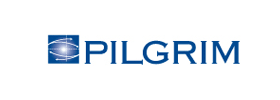
And Why Do Zillow, the Assessor, and My Insurance Company All Say Something Different?
What would it cost to rebuild your home if it were destroyed tomorrow?
Why does your insurance company ignore Zillow, Redfin, or your tax assessment?
💡 Here’s the truth: your homeowners insurance isn’t about what your home could sell for—it’s about what it would cost to rebuild it today.
📘 In this article, we’ll break down:
- Why insurance companies use replacement cost (not market value)
- Why Zillow and tax assessments aren’t accurate for insurance purposes
- How to make sure your policy keeps up with inflation and construction costs
Why Your Insurance Value Doesn’t Match Zillow 🏡
Many homeowners are shocked when their insurance value is lower—or sometimes higher—than what they see online or on their property tax statement. Here’s why that happens.
Insurance Companies Use Replacement Cost, Not Market Value 🛠️
Your insurance policy is based on what it would cost to rebuild your home—not what you paid for it or what it would sell for. Market value includes a lot of variables that don’t apply to rebuilding, like:
- Location desirability (schools, crime, views)
- Land value (which isn’t covered by insurance)
- Housing demand, interest rates, and local market trends
These factors don’t affect the cost of construction materials or labor, which is why replacement cost is more accurate for protecting your investment.
What’s With All These Different Home Values? 🧮
When researching your home’s value, you might come across three very different numbers:
🏷️ Market Value
What someone would pay for your home today—driven by supply, demand, and location.
💻 Zillow or Redfin Estimate
An algorithm-based guess using recent sales, not rebuilding costs.
🏛️ County Assessor’s Value
A government estimate used for property taxes—often lower than market value and irrelevant for insurance.
⚠️ None of these reflect what it would cost to rebuild your home after a disaster.
How Insurance Companies Actually Calculate Your Coverage (Coverage A) 📋
Look at your policy’s “Coverage A” line. That’s your rebuild estimate, not your home’s sale price.
Insurance carriers use advanced software called a Replacement Cost Estimator (RCE). Here’s what it factors in:
- Total square footage (above ground and basement)
- Construction style (ranch, colonial, two-story, etc.)
- Age of the home (older = pricier to rebuild)
- Interior features (flooring, countertops, ceilings)
- Custom upgrades (windows, roofing, layouts)
- Local material and labor costs
🛑 This number should reflect today’s rebuilding costs—not what your home sold for five years ago.
Rebuilding Costs Change Fast—Is Your Policy Keeping Up? 📈
Several economic and environmental factors can impact rebuilding costs, including:
- 🌪️ Natural disasters (wildfires, hurricanes) = labor & material shortages
- 🚛 Supply chain disruptions = price spikes (think COVID-19)
- 💵 Inflation = rising cost of building materials year-over-year
If your insurance hasn’t adjusted for these changes, you could be underinsured.
When Insurance Value Is Higher or Lower Than Market Value 🔍
When Insurance Value Is Lower:
This often happens in areas with high real estate prices. That’s because land isn’t insured, and location-based premiums don’t affect rebuild cost.
When Insurance Value Is Higher:
Some homes are costly to rebuild even if they wouldn’t sell for much. This is common when:
- The home is custom-built or historic 🏚️
- You live in a rural area with fewer construction resources 🚧
- Local building codes require expensive updates ⚙️
Why Zillow & County Assessors Don’t Help with Insurance 📉
🧠 Zillow and Real Estate Sites
- Designed to estimate sale price, not reconstruction
- Use algorithms and comparative sales data
- Ignore current material and labor costs
🏛️ County Assessor’s Office
- Calculates value for property tax purposes
- Often separates land and building values
- Typically understates real market value
Neither source helps determine what you need for adequate insurance coverage.
3 Steps to Make Sure You Have the Right Coverage ✅
1. Monitor Local Construction Costs 🏗️
Keep tabs on what builders are charging in your area. After major disasters, prices can spike.
2. Ask About Inflation Guard Endorsements 📑
Many policies include this by default—but not all. Make sure your coverage automatically adjusts over time.
3. Review Your Policy Every Year 🔁
Especially after:
- Home upgrades (kitchens, additions, roofing)
- Changes to local building codes
- Major economic shifts
🗣️ Not sure what Coverage A should be? Speak with an independent insurance agent.
Final Thoughts: Make Sure You’re Covered When It Counts 🛡️
After reading this, you now know: Zillow, tax assessments, and market values don’t reflect what it would cost to rebuild your home. That’s why replacement cost is the only number that matters for insurance.
🧭 Next Steps:
- Review your homeowners policy
- Check if your Coverage A reflects current building costs
- Talk to your insurance advisor to ensure you’re not underinsured
Need Help Reviewing Your Policy?
At Vargas & Vargas Insurance, we shop many financially strong insurance carriers—local and national—to make sure your policy reflects today’s real-world rebuilding costs.
📞 Schedule a free coverage review today and get peace of mind knowing your home is truly protected.












